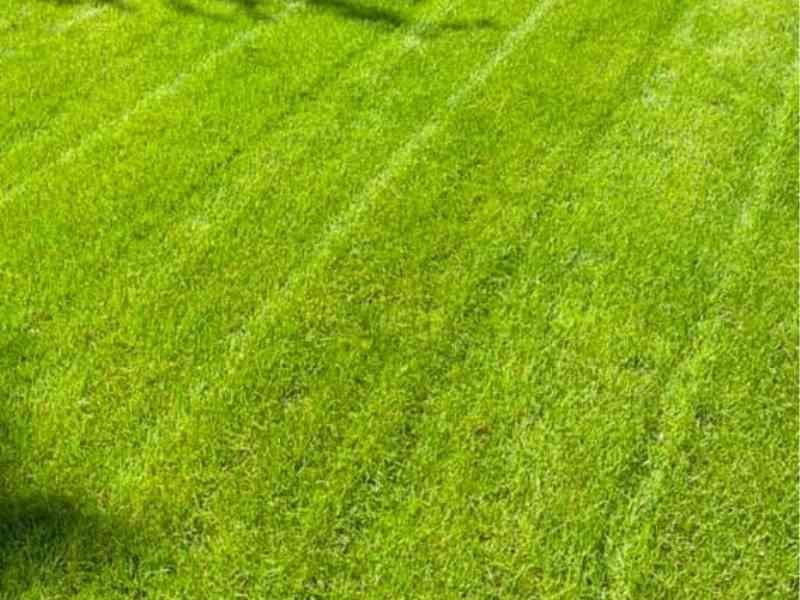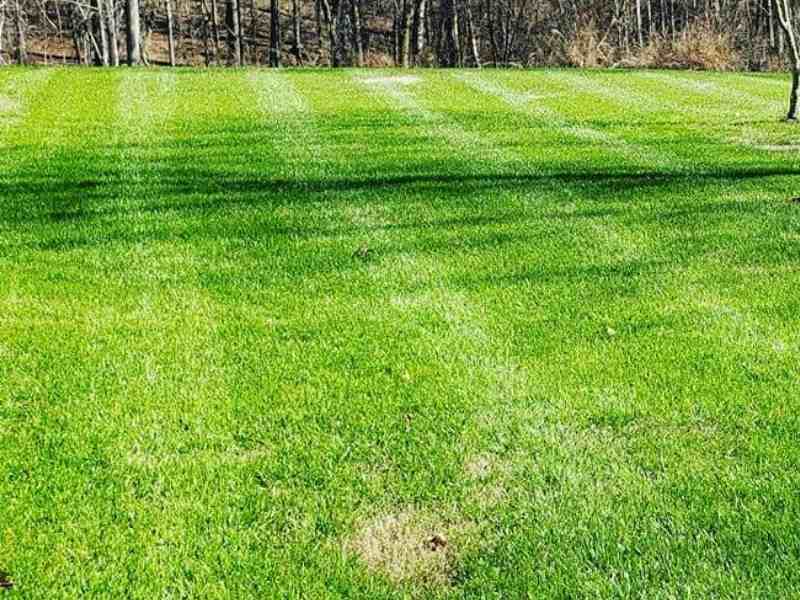Types of Ryegrass
Often confused with rye, the grain ryegrass is a genus of grasses. You grow ryegrass for its high-traffic tolerance, rapid growth, and soil protection during winter.
Depending on your location, you can choose from four main types of ryegrass.
- Wild ryegrass
- Annual
- Perennial
- Cereal or winter ryegrass
However, there are subtypes that fall within the main categories that are worth a mention. These include
- Italian
- Marshall
- Intermediate
Here are different ryegrasses’ characteristics, strengths, and weaknesses.
What kind of grass is ryegrass?
Ryegrass is a genus containing up to 10 grass species. Ryegrasses have a bunching growth habit and grow via vertical shoots called tillers (the process is referred to as tillering). Most ryegrass species have folded vernation and attach to the shoot via auricles.
Most ryegrass species will fall under annual or perennial categories. Ryegrass varieties are cultivated as pasture, forage, and hay production. Others such as annual ryegrass and perennial ryegrass perform great as turf grasses. Still, there are others like Darnel ryegrass, considered a weed and is toxic to livestock.

Types of ryegrass
Ryegrass is grouped according to its use, growing region, physical features, and benefit to a grower. These are the main types.
Marshall ryegrass
Marshall ryegrass is commonly grown for pasture and as a cover crop in erosion-prone landscapes.
This ryegrass variety boasts exceptional cold tolerance, hence can survive the harsh winters of the northern parts of the country. Marshall ryegrass germinates and spreads quickly due to its remarkable adaptability to different soils and soil conditions.
Note: Marshall ryegrass can survive waterlogged soil conditions longer than other ryegrasses and turf grasses.
As a cold-tolerant, cool-season grass, Marshall ryegrass thrives in the fall or the winter. During the growing season, adding nitrogen fertilizer to the soil boosts the growth and health of this ryegrass variety.
Italian ryegrass
Italian ryegrass (Lolium multiflorum) is a cool-season grass type with a bunch-type growth habit. The lower side of the grass blade has a shiny appearance. Meanwhile, the seed-head is a single spike that’s 4-16 inches high and contains tiny spikelets. Each spikelet houses about 10 small flowers.
Italian ryegrass is commonly used as a pasture grass due to its great digestibility for cows. It germinates quickly (7-10 days), establishes easily, and is highly responsive to nitrogen fertilizers, making it more attractive as a winter forage grass. Despite growing in different soil conditions, Italian ryegrass thrives in well-draining, nitrogen-rich soil.
Perennial ryegrass
Perennial ryegrass(Lolium perenne) is a cool-season ryegrass that’s most commonly used as turf grass for its fast establishment rate and lush green color. It’s commonly used to overseed warm-season turfs, ensuring the lawn stays green from fall through the next spring while the warm-season grass is dormant.
Note: Perennial ryegrass grows to about one foot tall, and the grass leaf blades are fine-textured.
Perennial ryegrass also boasts decent wear hardiness due to its bunch-type growth habit that forms an extensive root system. It thrives in full sun, but it can tolerate mild shade conditions.
Annual ryegrass
Annual ryegrass is an annual grass that grows in bunches and has a bright green leaf blade color, hence its popularity as turfgrass. As a cool-season grass, it is best planted in the fall. Annual ryegrass is highly vulnerable to drought and heat conditions.
Note: Unlike perennial ryegrass blades that are fine-textured, annual ryegrass leaf blades are coarse-textured.
This ryegrass variety mixes well with other cool-season grasses to form ground cover in the fall and winter, thus preventing soil erosion and suppressing cool-season weeds.
Intermediate ryegrass
Intermediate ryegrass(Lolium hybridum) is a perennial ryegrass variety that grows in bunches. Being a cool-season grass, it’s commonly used to overseed warm-season turfs in the fall so that the lawn stays green all year round.
Note: Intermediate ryegrass is a hybrid ryegrass cultivar that was developed by crossbreeding perennial ryegrass with annual ryegrass.
Intermediate ryegrass is great for lawns in the cool season, as it germinates quickly from seed (7-10 days). Moreso, it can withstand low temperatures in the fall and in the winter, common in the northern zones. Intermediate ryegrass is also used as forage and to produce hay.
Cereal ryegrass
Cereal ryegrass or winter rye is a ryegrass variety that looks like wheat and oats. This cool-season cereal grain has an upright growth habit and typically grows 3-6 feet tall. Cereal ryegrass has a robust, fibrous root system that can draw nutrients from deep in the soil, giving this grass excellent drought and cold tolerance.
This type of ryegrass is typically propagated from seed in the fall as it can sprout seedlings even when temperatures drop as low as 33 degrees Fahrenheit. Cereal ryegrass is most commonly used as a cover crop to crowd out winter weeds and minimize winter soil erosion.
Note: Cereal ryegrass thrives in sandy and mild loamy soil conditions. However, it can dry out the topsoil in dry conditions. It can also grow as high as 6 feet in wet conditions.
Wild ryegrass
Wild ryegrass is a perennial variety of ryegrass that grows in the spring when the weather is cool. This cool-season grass grows rapidly via underground runners known as rhizomes and flowers in the summer. Wild ryegrass has stiff leaf blades that can grow up to 10 cm tall.
Since it forms dense sod, wild ryegrass is commonly used in lawns for erosion control or to overseed warm-season turfgrasses in the winter. Livestock farmers also like using this Western US native grass as winter forage.
Common cultivars of wild ryegrass include giant wild rye, Virginia wild rye, and Russian wild rye.
Festulolium
Festulolium(Festulolium braunii) is a hybrid cultivar developed by crossbreeding ryegrass with fescue. As a hybrid ryegrass variety, it has the beneficial properties of both ryegrass and fescues. It performs better than normal ryegrasses in terms of cold hardiness and disease resistance.
Note: Festulolium is a perennial with a bunch-type growth pattern.
Festulolium is most commonly used as a grazing or forage grass since it is high yielding and establishes quickly from seed. It’s also highly responsive to nitrogen fertilizers in the spring and thrives in nitrogen-rich soils that are well-draining.
What kind of grass is perennial ryegrass?
Perennial ryegrass is a cool-season ryegrass that comes back year after year if planted in mild summer areas. This grass species, Perennial ryegrass, has folded vernation (the leaves are folded in the bud). The blades are also tapered at the edges and are smooth/glossy on the lower side.

Perennial ryegrass is neither rhizomatous nor stoloniferous, as it grows in bunches. This grass species has good cold tolerance but poor shade and heat tolerance.
Perennial ryegrass is the kind of grass you grow on your lawn if you want a lush cover of swaying green, especially at the onset of fall. It’s a fast grower, and it can withstand heavy foot traffic, making it great for areas with grass-fed animals.
What is the difference between perennial ryegrass and annual ryegrass?
The table below summarizes the differences between perennial ryegrass and annual ryegrass.
| Perennial ryegrass | Annual ryegrass |
| Has fine-textured blades | Has coarse-textured blades |
| Grows up to one foot; flower spike can also reach 1 foot | Grows up to 6 inches; flower spike is shorter (3-6 inches) |
| Reappears every year wherever it’s hardy | It has to be replanted every growing season |
| Leaf-blade is a darker shade of green | Leaf-blade is light green |
| Costs more than annual ryegrass | Costs less than perennial ryegrass |
| Has poor shade tolerance | Has slightly better shade tolerance than perennial ryegrass |
| Grows in USDA zones 5-7 | Grows in USDA zones 4-9 |
| Has better disease tolerance but is more vulnerable to very chilly conditions | Has better cold tolerance but is more vulnerable to disease. |
There are several similarities between perennial ryegrass and annual ryegrass. They’re both cool-season grasses, both have a bunch-type growth habit, and are both commonly used to overseed warm-season turfs in the fall and winter. However, that’s as far as the similarities go.
For instance, while perennial ryegrass has fine-textured leaf blades, annual ryegrass leaf blades feel coarse to the touch. Additionally, perennial ryegrass can grow up to one foot tall, about six inches more than annual ryegrass’ height if not mowed. Perennial ryegrass flower spikes also tend to grow taller (up to 12 inches) than annual ryegrass flower spikes (3-6 inches).
Another notable difference is that perennial ryegrass is a perennial, which means it’ll reappear in your lawn every growing season after the first time of planting. On the other hand, annual ryegrass is an annual grass that needs to be reseeded after every growing season.
Perennial ryegrass leaf blade carries a darker shade of green compared to annual ryegrass’ bright green blade color. As such, most people consider Perennial ryegrass a more visually-appealing turf grass option.
Most grass seed stores price perennial ryegrass seed higher than annual ryegrass seed. However, this is usually offset by the fact that you don’t have to reseed a perennial ryegrass lawn every growing season (unless you live in the south where summers are extremely hot and it’s likely to die).
Though both grass varieties prefer full sunlight, annual ryegrass has slightly better shade tolerance than perennial ryegrass. Annual ryegrass is also the more cold-hardy variety but is more vulnerable to diseases. Finally, while perennial ryegrass thrives in USDA hardiness zones 5-7, annual ryegrass is hardy in USDA zones 4-9.
What the ryegrass hay nutritional value
Ryegrass hay provides about 65% in total digestible nutrition (TDN) and up to 16% crude proteins for livestock. It makes a highly sought-after nutritional resource for farmers. According to some sources, it can contain up to 10% protein and 33% fiber.
It also has the recommended iron, zinc, manganese, and potassium.
It is stored at 50% moisture as a backup feed during winter.
However, it may also have a high fructan content, which can cause laminitis in horses.
References
i. University of California: Perennial ryegrass- Lolium perenne
ii. North Carolina State University (NCSU) Extension: Annual Ryegrass


